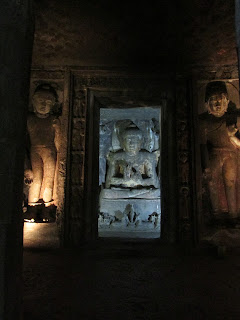1.
You ask
for extra red pepper flake packets for your domino’s pizza that suddenly seems
a bit too bland.
2.
Your clothes never match in color or pattern but
that’s cool because no one’s really does.
3.
You don’t wear shoes, ever.
4.
You’re able to cross a busy two way street at
rush hour with the confidence of Moses parting the red sea.
5.
You know and have named every street dog in your
neighborhood.
6.
You've accepted the fact that the YMCA is still
a relevant and popular dance in almost every night club.
7.
You’re no longer fazed driving into oncoming
traffic.
8.
You walk into an Internet café with absolutely no
expectations of there being Internet or it being a café.
9.
When you hear a car playing the happy birthday
song you back up, it’s no one’s birthday, the car is just going in reverse.
10.
You can eat an entire meal, including rice, with
only one hand.
11.
You’re able to push and bully your way to the
front of lines with no remorse- large crowds call the ‘eat or be eaten’ mentality
into focus.
12.
You start charging to have your picture taken.
13.
You've mastered the Indian head swivel which can
mean yes or no depending on the occasion.
14.
You always have a roll of toilet paper on you.
15.
You’re not constantly sweating, you’re
constantly glistening.
So this post is coming quite late but as I might have mentioned before, reliable Internet is as mythical as the Hindu gods. Below are the pictures from the Ganpati festival- I’m sure
the Internet can give a much better and in-depth analysis of this Hindu holiday
but here’s a very quick and watered down foreigners version: Ever since I arrived in India all I’ve been
hearing talk about is the Ganpati festival.
Ganpati is a 10 day celebration of one of the most important Hindu gods,
Ganesh, a God with the head of an elephant, body of a man and 4 outstretched
arms. At the beginning of the holiday
every family brings a statue of Ganesh into their homes and prepares an
appropriate alter baring flowers, gifts and incense. Likewise, huge Ganesh idols are placed all
around town with extremely elaborate setups ranging from robotic peacocks to
waterfalls to red carpets and chandeliers.
At the end of the festival a huge procession takes place across town
where all of the idols are immersed into the river (or carefully selected water
tanks for the eco conscious). The
procession is a 36 hour affair of nonstop drumming, dancing, lights and music
that starts from one end of Pune, or your respected town, and ends at the river
where the idols are immersed.
Alter for Ganesh in my host family's house
Prayer before immersing Ganesh in designated water tanks
This has absolutely nothing to do with India or the Ganpati festival, but I miss my puppy!
















































